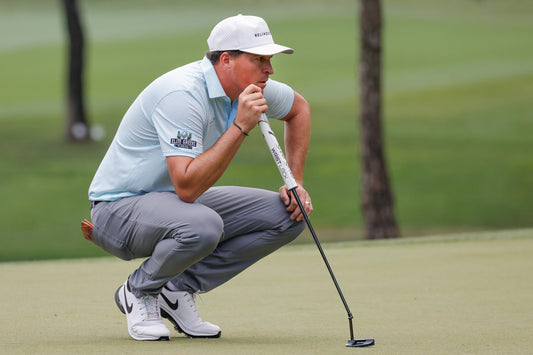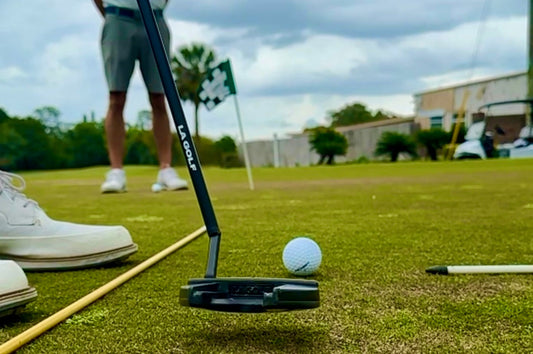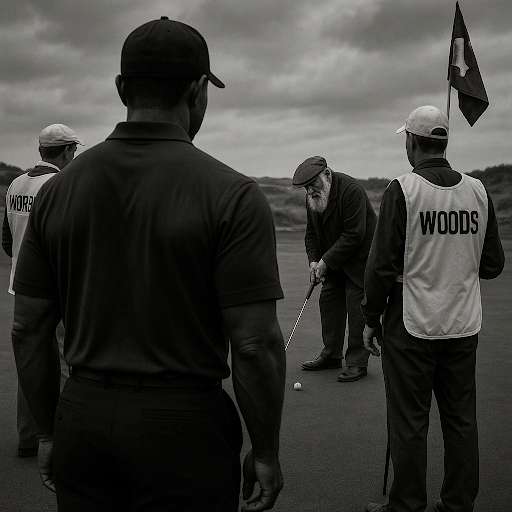Kevin Roy sells the hell out of a lag putt. Ninety-eight percent three-putt avoidance? Second on tour. But ask him to knock down a seven-footer for birdie, and suddenly he's 169th in the field at a pedestrian 49 percent.
This is professional golf's most maddening contradiction wrapped in a player who spent years hawking medical devices between mini-tour events. Roy's putting tells two stories: a master of damage control who transforms into something magical when Sunday pressure hits.
His numbers don't lie; they argue with each other. While Roy ranks dead last in second-round putting at nearly 30 putts per round, he becomes the tour's 10th-best putter on Sunday at 27.7 putts. That's not statistical noise — that's a complete personality change on the greens.
The Friday Freeze, Sunday Fire
"I really wish I had a great answer for why those stats are so fascinating," Roy admits, laughing at his own contradiction. "I've been working really hard with my mental coach on treating every tournament round the same, but there's absolutely times where I have found myself putting a bit tentatively or defensively on Fridays being that it is cut day, not trying to make any mistakes."
Cut day reveals Roy's biggest enemy: his own caution. When survival matters most, he putts scared. When everything's on the line Sunday, he putts free.
This split personality extends beyond just make percentage. Roy's approach from 30-plus feet ranks 21st on tour, leaving himself an average of just more than two feet for his second putt. He's built a fortress around disaster avoidance that occasionally becomes a prison.
The Seven-Foot Curse

Mar 21, 2024; Palm Harbor, Florida, USA; Kevin Roy lines up his putt on the ninth green
during the first round of the Valspar Championship golf tournament. Photo Credit:
Reinhold Matay-Imagn Images
Seven feet broke Kevin Roy. Not physically — mentally.
From five feet, he converts 88.5 percent (16th on tour). From 10 feet, he's respectable. But that seven-foot range? Hockey stick graph straight down to 49 percent. It's where "should make" meets "might miss," and Roy's brain short-circuits.
"Putting has always been the part of my game I needed to improve," he says. "I started working with Ralph Baurer with my putting the week of San Antonio and I'm very happy to see some nice results on the greens since starting with him."
Seven feet occupies putting's most dangerous territory. Close enough that Tour players expect to make it. Far enough that perfection matters. A slight misread that's meaningless from 15 feet, but kills you from seven. The psychology of "should make" putts creates tension that doesn't exist on longer attempts where hope replaces expectation.
Father-Son Laboratory
Jim Roy made millions putting on the PGA Tour and Champions Tour. His son Kevin putts nothing like him.
"My dad has always had a great short game," Kevin explains. "Our putting techniques couldn't be further from the opposite — he's always putted conventional, I've tried every grip possible and now fully committed to the 'claw' grip."
Their Florida practice sessions become ongoing experiments. "We play and practice all the time at home, and whether my dad or myself have a new drill, or green reading technique we certainly talk about it and practice it."
Two generations, completely different approaches, constant collaboration. Jim succeeded with feel. Kevin's searching for his formula through systematic change.
The Ralph Baurer Revolution
Everything changed when Roy started working with putting coach Ralph Baurer. Not gradually — immediately.
"Ralph has helped me immensely on green reading," Roy says. "I've always been a pretty fast player, almost too fast at times. My routine on the green definitely changed since Ralph, basically slowing down, reading the putt from all angles — behind the putt, other side of the hole and low side."
Speed killed Roy's putting. Not stroke speed, but decision speed. He'd walk up, look once, pull the trigger. Baurer forced him to become deliberate: multiple angles, comprehensive reads, complete information before commitment.
The daily mirror work became religious. "I start every tournament day with a mirror on a straight putt for about five to seven minutes just making sure setup and eyes are in a good spot."
Distance Control Mastery

Jul 5, 2025; Silvis, Illinois, USA; Kevin Roy lines up his putt on the 9th hole during the third round of the John Deere Classic golf tournament. Credit: Marc Lebryk-Imagn Images
Roy discovered his superpower hiding in plain sight: lag putting.
"As far as lag putting drills, other than hitting a bunch of long putts beginning of tournament weeks and during practice rounds, really just trying to dial in the speed of the greens."
That 21st ranking in proximity from 30-plus feet? That's elite territory disguised as a practice statistic. Roy rarely faces the comeback putts that destroy scorecards and confidence. His two-foot average leaves comfortable makes, not knee-knockers.
This explains the three-putt avoidance. When your worst lag putt leaves three feet, disaster becomes nearly impossible.
Advice That Works
Roy's suggestions for amateurs come from painful experience, not theory.
"I think for amateurs, I would certainly start with alignment. I see a ton of amateurs in pro-ams consistently leaving either right to left or left to right putts on the low side."
His green-reading prescription: "Take a couple extra seconds and just look at the putt from all angles, look at the contours on the greens."
For distance control, Roy recommends a specific drill that built his lag putting foundation: "Finding a 30-40 foot putt and putting a tee or alignment stick roughly three feet behind the hole and three feet in front of the hole and hitting putts where the ball ends up between the tees."
The short breaking putts that haunt weekend golfers? "Put a tee out next to the cup where you think the ball should be starting, that way when you look up, you look at your starting line rather than just the hole."
The Transformation Continues
Roy's putting journey exposes professional golf's harsh reality: elite skills in one area don't automatically transfer to another. His defensive mastery — three-putt avoidance, lag putting, course management — provides Tour-level job security. His offensive development — seven-foot conversions, aggressive lines, Sunday confidence on Friday — will determine whether he contends or just survives.
The Baurer partnership already shows results. Roy's green reading improved dramatically. His routine became more thorough. His confidence grew.
But that Friday-to-Sunday transformation remains golf's great mystery. Roy possesses Sunday magic; he just can't access it consistently. When pressure mounts and consequences loom, he putts fearlessly. When survival matters, he putts scared.
The Path Forward
Kevin Roy built his putting game backwards. Most players develop aggression first, then learn control. Roy mastered control and now chases aggression.
His three-putt avoidance provides unshakable foundation. His lag putting eliminates big numbers. His course management keeps rounds alive. These aren't consolation prizes — they're Tour-level skills that separate professionals from dreamers.
The seven-foot putting will improve. The Friday caution will fade. The technical work with Baurer addresses both issues systematically.
Roy's story offers hope to every golfer fighting their own putting demons. Improvement happens differently for everyone. Sometimes you build from defense to offense. Sometimes breakthrough comes through slowing down, not speeding up. Sometimes the answer isn't trying harder — it's trusting more.
Most importantly, Roy proves that putting transformation remains possible at golf's highest level. The foundation exists. The coaching works. The Sunday performances show what's possible.
Now Roy just needs to putt like it's Sunday every day of the week.





